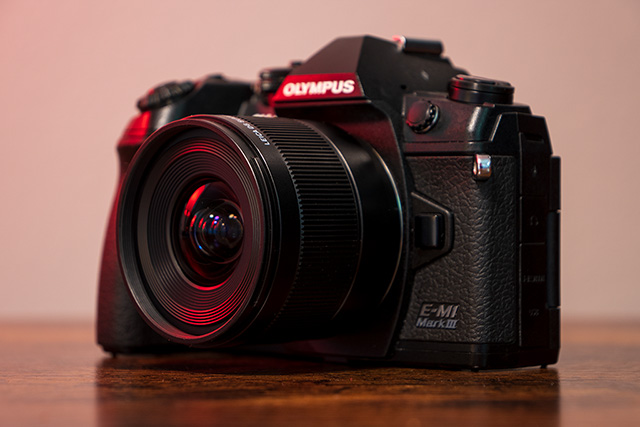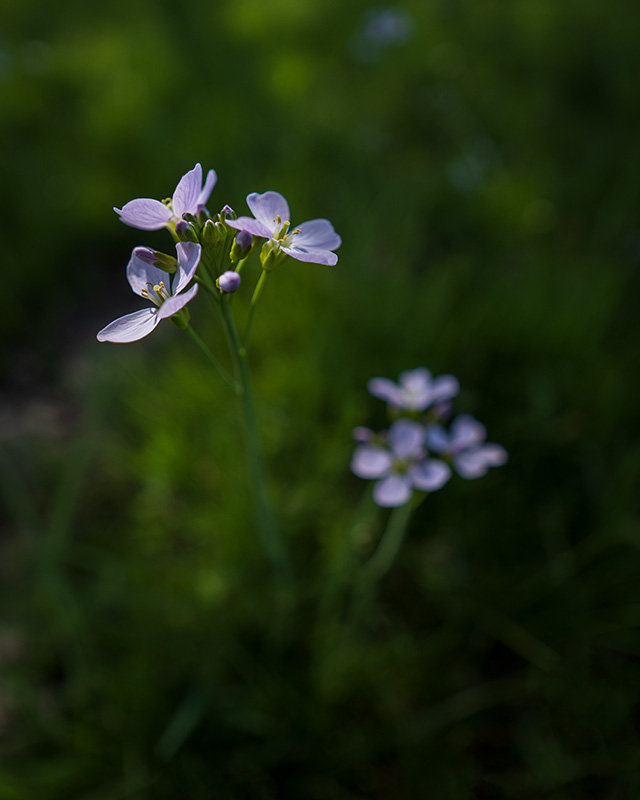Panasonic Leica DG Summilux 9mm F1.7 ASPH announced for Micro Four Thirds: Hands-on with the compact wide-angle prime
posted Tuesday, May 17, 2022 at 10:00 AM EDT
Click here to see our Panasonic 9mm F1.7 ASPH Gallery

Panasonic has announced the Leica DG Summilux 9mm F1.7 ASPH lens for Micro Four Thirds. The wide-angle lens is extremely compact and lightweight despite its fast F1.7 aperture. We've gone hands-on with the lens alongside an Olympus E-M1 Mark III, although we hope to use the new lens on a Panasonic GH6 body soon to give the lens the full review treatment. However, we've had enough time with the lens to offer some general thoughts about its design and performance. Before getting to that, let's cover the lens's main features and specifications.
Panasonic Leica DG Summilux 9mm F1.7 ASPH key features and specs
- Micro Four Thirds lens
- 9mm prime (18mm equivalent)
- 100-degree angle of view
- F1.7-16 aperture range
- 7-bladed aperture diaphragm
- 12 elements in 9 groups
- Includes 2 aspherical lenses, 2 ED lenses and 1 UHR lens
- Closest focusing distance is 0.095m (0.31')
- Maximum magnification is 0.25x (or 0.5x in 35mm equivalent terms)
- L x D: 52mm (2.05") x 60.8mm (2.39")
- Weighs 130g (0.29 lbs)
- 55mm filter thread
- Available in late July for $499

Lens design: Super compact and lightweight
The first thing you notice about the Panasonic Leica DG Summilux 9mm F1.7 is its size. It's tiny. At only 52mm (just over 2") long, it's a compact lens. It's not quite in "pancake lens" territory, but it comes close. Weighing only 130g, it's also a lightweight lens.

Despite its small stature, the lens maintains the same styling and apparent build quality we expect from Panasonic's Leica-branded lenses. The lens includes a dust- and splash-resistant design. It has a good feel, and the focus ring is quite wide, considering how short the lens is. The focus ring's rotation sensitivity and throw distance can also be tweaked on compatible Panasonic cameras. Further, the lens has been designed to suppress focus breathing, making it a good choice for video purposes.

As we'll see in the next section, the lens has good optical performance, but its best feature might be its compact and lightweight design.
Image quality
We're going to do a full image quality analysis in our full hands-on review later, but for now, let's take a quick look at the lens's optical design and quality. The lens has 12 elements arranged across 9 groups, including a pair of aspherical lenses, two ED lenses and a single UHR (Ultra High Refractive Index). The resulting sharpness is quite impressive.


The lens is very sharp, even when shot wide open, but the lens has one potential optical shortcoming. It is a bit prone to longitudinal chromatic aberration. However, there's a caveat, as I am using the lens on an Olympus E-M1 Mark III camera that doesn't yet support the lens. Likewise, Adobe Camera Raw doesn't have any support for the lens beyond whatever built-in profile from the raw files is being applied. The LOCA may be addressed later. I'm looking forward to testing the lens on a new Panasonic body.


The quick summary is that the lens is very sharp, even when shooting wide open, but currently shows some aberrations. Nonetheless, the lens has earned high marks so far. If you'd like to see some sharpness test shots at different apertures shot with center focus and bottom right corner focus, head to our Gallery.
In the field
The lens can focus impressively closely. The minimum focus distance is only 0.095m (0.31'), so you can get up close and personal with the Panasonic 9mm F1.7 lens. The maximum magnification is 0.25x, or 0.5x in 35mm equivalent terms. It's not technically a macro lens, but it does let you take nice close-up photos.


When you get close to your subject and shoot wide open, you can get pretty good bokeh and subject separation considering the lens's very short focal length. Bokeh isn't extremely smooth, but the transition from in-focus to out-of-focus is still impressive, especially for a wide-angle lens.


The lens also performs well when stopped down, making it a great choice for landscape photography. Performance holds up to about F8, although F5.6 is slightly sharper.

Summary
There's a lot to like about the Panasonic Leica DG 9mm F1.7 ASPH lens. It's super small and lightweight, which is always beneficial for usability. However, there's no compromise when it comes to image quality. The lens is very sharp, even at F1.7, and exhibits good control over distortion and vignette. There's a bit of chromatic aberration, but I'm not sure if that's something that future lens correction profiles will address. In any event, the aberrations are minor. The lens also delivers good bokeh thanks to its wide max aperture and impressive close-focus performance.

It's an excellent addition to Panasonic's Micro Four Thirds lens lineup. The lens is nearly as wide as Venus Optics' Laowa 7.5mm F2 manual focus lens and is much faster and more compact than Panasonic's Lumix G Vario 7-14mm F4 and 8-18mm F2.8-4 ASPH zoom lenses. Granted, the zoom lenses offer more versatility. If you want a wide-angle F1.7 lens, then Panasonic also offers the Leica DG Vario-Summilux 10-25mm F1.7 ASPH lens, which is almost as wide as the new 9mm F1.7 lens. However, that lens is $1,500 (regularly $1,800) and weighs 690g (1.52 lbs). It's also 128mm (5.04") long, so it's not a compact lens.

Both Panasonic and OM Digital Solutions offer 12mm prime lenses for Micro Four Thirds. Panasonic's is F1.4, and OM's is F2. The lenses cost $1,300 and $800, respectively, although the OM lens is currently on sale for $500. Granted, neither lens is as wide as the Panasonic 9mm F1.7, and the OM lens isn't as fast.
Basically, Panasonic's new 9mm F1.7 ASPH lens is unique in its ability to deliver a wide-angle field of view, fast aperture and impressive autofocus capabilities. Plus, add in that the lens is compact and lightweight, and it's an even more compelling addition to the Micro Four Thirds system.

Pricing and availability
The Panasonic Leica DG Summilux 9mm F1.7 ASPH lens will be available in late July for $499.99.